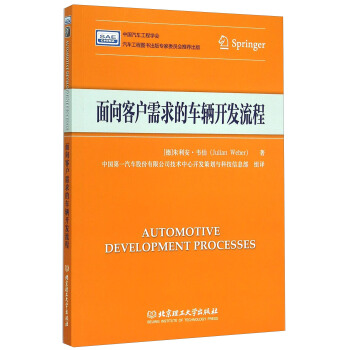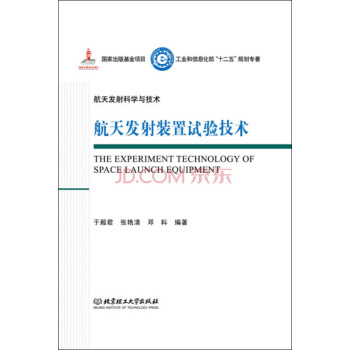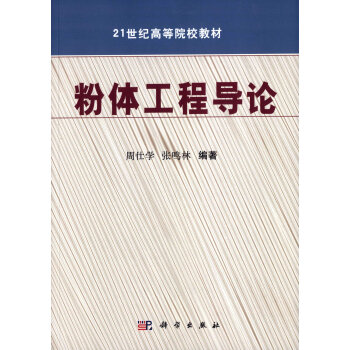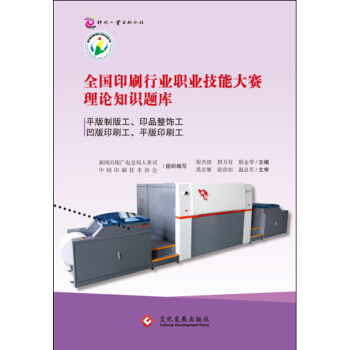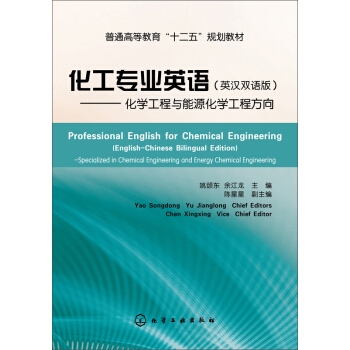

具体描述
编辑推荐
适读人群 :高等院校化学工程与工艺、能源化工类本科生,能源化学工程、化学化工专业技术人员。1.《化工专业英语》取材于相关专业领域的英文原版书籍。针对高年级本科生的英语接受能力,对一些语法句法复杂、生僻专业词汇偏多的段落进行了简单化处理,使之在保留专业英语原有语境基础上按通用英文语法进行重新编排,让学生通过对专业英语的阅读,逐渐达到能够直接阅读专业英语书籍和外文文献的水平。
2..《化工专业英语》的编写分为纯英文和中文两大部分,中文与英文部分内容严格对照但又各自独立。在英语部分,所设计的专业词汇采用英文单词注解,让学生在英语思维模式下巩固专业英语水平和能力。中文部分对文中的汉语词汇进行了英文翻译。课文的附录部分包括全书的总词汇表、煤化工专业英语词汇、基本元素词汇表。
内容简介
本教材取材于化学工程及能源化学工程相关领域原汁原味的英文,所选文章涉及煤化工、石油化工、天然气化工、C1化学、甲醇化学、生物质转化技术、新能源、燃料电池、氢能等领域。全书共分四个部分、十二个单元,每一单元分为精讲和阅读两个部分,两者篇幅一致、难度相近、领域相同,可适用于不同学时的课堂教学。针对高年级本科生英语接受能力,教材对一些语法复杂、专业词汇偏多的段落进行了统一化处理,在保留专业英语原有语境基础上按通用英文语法进行重新编排。本教材除用于高等院校化工专业以及能源化学工程专业本科生及研究生专业英语教学,还可用于留学生专业汉语教学及同等水平人员自修参考学习。精彩书评
NULL目录
Part1 Coal Chemistry1Unit1 Properties of Coal1
Reading Material 1 Situation of China’s Coal5
Exercise 18
第一部分煤化工10
第一单元煤的性质10
阅读材料1中国煤炭资源12
单元练习114
Unit2 Coal Gasification16
Reading Material 2 Upgrading Technology of Low�睪rade Coal20
Exercise 224
第二单元煤气化26
阅读材料2低阶煤加工技术28
单元练习230
Unit3 Direct Coal Liquefaction32
Reading Material 3Pollution Control and CO2 Capture35
Exercise 340
第三单元煤直接液化41
阅读材料3粉煤燃烧及污染控制43
单元练习346
Part 2Petrochemical47
Unit 4Crude Oil and Refinery Products47
Reading Material 4Atmospheric and Vacuum Crude Oil Distillation51
Exercise 454
第二部分石油化工56
第四单元石油及石油炼制产品56
阅读材料4常减压蒸馏59
单元练习461
Unit 5Fluid Catalytic Cracking62
Reading Material 5Catalytic Reforming66
Exercise 569
第五单元流化催化裂化70
阅读材料5催化重整73
单元练习574
Unit 6Hydrotreating Process76
Reading Material 6Distillate Hydrocracking80
Exercise 684
第六单元加氢处理工艺86
阅读材料6馏分油加氢裂化88
单元练习690
Part 3Natural Gas and C1 Chemistry91
Unit 7Natural Gas Processing and Transportation91
Reading Material 7Natural Gas Hydrate95
Exercise 799
第三部分天然气及C1化学101
第七单元天然气加工及运输101
阅读材料7天然气水合物104
单元练习7106
Unit 8Fischer�睺ropsch Synthesis107
Reading Material 8Natural Gas in China111
Exercise 8114
第八单元费托合成116
阅读材料8中国天然气现状118
单元练习8121
Unit 9Methanol Production and Application122
Reading Material 9Atmospheric Pollution and Greenhouse Effect125
Exercise 9129
第九单元甲醇生产及应用131
阅读材料9大气污染与温室效应133
单元练习9136
Part 4New Energy137
Unit 10Renewable Energy137
Reading Material 10New Energy Vehicle141
Exercise 10145
第四部分新能源147
第十单元可再生能源147
阅读材料10新能源汽车149
单元练习10151
Unit 11Biofuel152
Reading Material 11Waste Biomass Sources156
Exercise 11159
第十一单元生物燃料160
阅读材料11废弃生物质资源163
单元练习11165
Unit 12Fuel Cell166
Reading Material 12Hydrogen Energy170
Exercise 12173
第十二单元燃料电池175
阅读材料12氢能178
单元练习12180
Appendix(附录)181
Appendix 1Vocabulary181
Appendix 2Coal Chemical Vocabulary194
Appendix 3Petrochemical Vocabulary196
Reference203
精彩书摘
Gasification processCoal undergoes a series of chemical and physical changes in a gasification process. At drying stage when coal is heated at temperature higher than 100 ℃, most of the moisture is driven out. At devolatilization stage when coal temperature is increased to 500 ℃, significant devolatilization begins. More volatile materials are released at this stage. Liable bonds between the aromatic clusters in coal structure are cleaved, generating much smaller fragments. Fragments with low molecular weights will vaporize and escape from the coal particle to constitute light gases and tar. At gasification stage when coal temperature is higher than 900 ℃, maximum volatile yield occurs. More gas products were produced in the presence of CO, CO2, CH4, H2 and H2O. The yield and composition of volatile compounds depend on the heating rate and final temperature. Volatile yield at rapid-heating rates is normally 20-40% higher than that at slow-heating rates.
Gasifier
According to the fluidization regime, coal gasifiers are generally classified as moving bed, fluidized bed and entrained flow bed.
a) Moving-bed gasifier
Lurgi gasifier is the oldest gasifier technology that is still widely used in industries. Coal is fed into an atmospheric-pressure-bunker above the gasifier. A valve on the bottom of bunker will be opened when the bunker is full, dropping the coal into a coal lock. Then, the valve will be closed and coal lock is pressured until it reaches the reaction pressure of the gasifier, typically 2.4 to 3.5 MPa. After that, a valve at the bottom of coal lock will be open, dropping the coal into the gasifier. BGL (British Gas Lurgi) gasifier is a slagging version of a Lurgi gasifier. Instead of a grate at the bottom of the gasifier, oxygen and steam are injected into the slag layer through tuyeres. A stirrer near the top of the bed allows the use of caking coals.
Lurgi gasifier BGL gasifier Winkler gasifier
b) Fluidized-bed gasifier
Winkler gasifier, commercialized in 1926, was the first industrial fluidized-bed gasifier technology. In the bubbling fluidized bed regime, coal is fed into the gasifier at atmospheric pressure. At the same time, The gas consisting of steam and air (or oxygen) is splitted into two separated streams which are fed into the gasifier. The stream from the bottom will fluidize the solid coal particles and react with the solid coal combined with another stream from the side. About 70% of the ash is carried by fluidizing gas and is taken into the head space. The low operating temperature and pressure of the winkler gasifier limits the throughput of the gasification. Lignite and sub-bituminous coal with high ash fusibility temperatures are considered as ideal feedstocks under low operating temperatures.
c) Entrained flow gasifiers
The first commercial application of entrained flow coal gasifier was developed by Texaco in 1983. The standard method of feeding coal into a high pressure entrained flow gasifier is to finely grind the coal and then mix it with water to form a pumpable slurry. The slurry and oxygen are injected into the top of the gasifier, and the gas/solid/slag mixtures flow downward. The coal/water slurry feed technique works well with bituminous coals. When using lower grade coals, the water/coal ratio of the slurry feed is often far in excess of optimum due to the high intrinsic moisture in lower grade coals. Therefore, high water content of the slurry feed had to be vaporized by coal pyrolysis.
d) Unconventional gasifiers
NRG plasma gasifier can be served as an alternative coal gasifier. It utilizes a plasma torch to gasify a solid feedstock. This kind of gasifier is especially attractive for more difficult gasified feedstocks, such as municipal solid waste (MSW). Currently, the largest installed NRG gasifier is the Eco-valley waste-to energy facility in Japan, which gasifies 180 t/d of MSW and automotive shredder waste.
Underground coal gasification
In an underground coal gasification (UCG) process, untapped coal-seams are reacted with insufficient oxygen to create syngas underground. An oxidant, usually air, flows through an injection well into a cavity in a coal seam. The oxygen and water within the coal seam react with the coal to produce syngas, which is withdrawn through a production well. Compared to the above-ground gasifiers, UCG offers a considerable capital cost savings by canceling the gasifier and a considerable operating cost savings by eliminating the cost of mining coal. In UCG process, steam may be generated because some coal seams are aquifers. These steams are benefit for char gasification. Some of them are consumed in the water-gas-shift reaction to produce H2 and CO2 from H2O and CO. In addition, partial of H2 will react with carbon to produce CH4, which can enhance the calorific value of the gas.
Entrained flow gasifiers
Specialized English Words
Devolatilization
Liquefaction.
Slagging To obtain a mixture of shale, clay, coal dust, and other mineral waste produced during coal mining.
Tuyere A water-cooled nozzle through which air is blown into a cupola, blast furnace, or forge.
Pyrolysis Decomposition or transformation of a compound caused by heat.
Seam A line of junction formed by sewing together two pieces of material along their margins.
Expressions and Technical Terms
Moving bed Granulated solids in a process vessel that are circulated either by mechanically or by gravity flow; used in catalytic and absorption processes.
Fluidized bed A cushion of air or hot gas blown through the porous bottom slab of a container which can be used to float a powdered material as a means of drying, heating, quenching, or calcining the immersed components.
Entrained flow bed In the entrained flow gasifier a dry pulverized solid, an atomized liquid fuel or a fuel slurry is gasified with oxygen (much less frequent: air) in co-current flow. The gasification reactions take place in a dense cloud of very fine particles.
BGL
(British Gas Lurgi) The principle of a slagging fixed-bed gasifier basing upon the British Gas/Lurgi (BGL) technology is predominantly applied for the generation of high-quality syngas which is free of any attendant substances and can be processed to various product.
Winkler gasifier High-temperature winkler gasifier is one of the oldest gasification technologies which was developed by Rheinbraun in Germany in 1926.
Caking coals When many bituminous coals are heated, they soften and form a plastic mass that swells and resolidifies into a porous solid. Coals that exhibit such behavior are called caking coals.
Notes
① Coal gasification: Coal gasification is the process of producing syngas–a mixture consisting primarily of methane (CH4) carbon monoxide (CO), hydrogen (H2), carbon dioxide (CO2) and water vapor (H2O)–from coal and water, air and/or oxygen.
② Coal gasifier: Several types of gasifiers are currently available for commercial use: counter-current fixed bed, co-current fixed bed, fluidized bed, entrained flow, plasma, and free radical gasifier.
③ Underground coal gasification (UCG): UCG takes advantage of the same chemical reactions of coal to produce product gases, as those occurring in conventional gasifier reactors. The main difference is that in UCG the underground coal seam itself becomes the reactor, so that the gasification of the coal takes place underground instead of in a manufactured gasification vessel at the surface.
Reading Material 2: Upgrading T
用户评价
我最近入手了这本《化工专业英语(英汉双语版)——化学工程与能源化学工程方向》,刚翻了几页就觉得相见恨晚。作为一名即将毕业的研究生,我深感在学术研究和论文撰写过程中,专业英语的表达能力至关重要。这本教材恰恰解决了我的燃眉之急。它不仅仅是简单的单词和句子的堆砌,而是真正地从化工和能源领域的需求出发,精选了大量具有代表性的文献、技术报告和学术论文片段。姚颂东教授团队的用心可见一斑。书中对能源化学工程方向的关注,尤其让我感到兴奋。随着全球对可持续能源需求的日益增长,能源化工领域的研究热度持续攀升,而相关的英文文献浩如烟海,如何准确理解和高效吸收其中的信息,成为了一个巨大的挑战。这本书的出现,无疑为我们提供了一个非常好的学习平台。它的英汉对照模式,让我能够清晰地把握英文原文的精髓,同时对照中文翻译,加深理解,甚至可以学习到更地道的中文表达方式。我特别注意到书中对于一些新兴能源技术(如氢能、储能、生物质能转化等)的介绍,相关的专业术语和英文表达都相当规范和前沿。这对于我未来撰写相关的研究课题和学术论文,无疑具有极高的参考价值。它让我在阅读英文文献时,不再感到畏惧,而是充满了信心。此外,书中还穿插了一些对专业术语的详细解释和词汇辨析,这对于我们避免在专业交流中产生误解至关重要。
评分说实话,拿到《化工专业英语(英汉双语版)——化学工程与能源化学工程方向》(姚颂东)这本教材的时候,我本来没抱太高的期望,毕竟市面上同类的书籍也看了不少。但出乎意料的是,这本书给了我巨大的惊喜。首先,它的编排设计非常合理。英汉双语对照,并且在关键的专业术语旁都有详细的解释,这对于我这种英语基础不算顶尖,但又需要阅读大量英文技术资料的研究生来说,简直是福音。我以前查阅英文文献,经常要耗费大量时间在查阅生词和理解专业背景上,这本书极大地提高了我的效率。其次,内容的深度和广度都非常令人满意。化学工程和能源化学工程这两个方向,都代表着化工领域的核心和前沿。书中选取的案例和篇章,都非常有代表性,既有经典的化工单元操作,也有当前热门的新能源技术,比如高效催化、储能材料、绿色化学等。这些内容的时效性和实用性都非常强,能够帮助我及时了解行业最新动态。我特别喜欢书中一些段落的写作风格,非常严谨,逻辑清晰,用词精准。这对于我学习如何用英语准确地描述复杂的科学概念和技术细节,提供了绝佳的范例。读这本书,我感觉不仅仅是在学习英语,更像是在进行一次高质量的专业知识回顾和更新,每次阅读都能有所收获,并且能将其中的知识点融会贯通,运用到我的实际学习和研究中去。
评分读完《化工专业英语(英汉双语版)——化学工程与能源化学工程方向》(姚颂东译)这本书,我感觉像是完成了一次深度的专业英语“体检”。这本书的内容覆盖面之广,细节之处之精准,都让我印象深刻。从最基础的化工原理,到复杂的工艺流程设计,再到前沿的能源化工技术,几乎涵盖了化学工程与能源化学工程学习和研究的方方面面。作为一名在化工行业工作了多年的老兵,我深刻体会到,每一次技术革新和管理升级,都离不开与国际接轨的专业知识和沟通能力。而这本书,就像一把金钥匙,为我们打开了通往世界化工领域前沿的大门。它不仅仅是一本教材,更像是一本百科全书,一本字典,一本经验总结。我尤其欣赏书中对于不同语境下专业术语的翻译处理,非常到位,能够准确地传达原文的含义,避免了机械翻译可能造成的歧义。而且,书中很多句子结构和表达方式,都非常值得我们学习和模仿,能够极大地提升我们英文写作的专业性和地道性。例如,在描述复杂的化学反应机理或者工艺优化策略时,书中提供的范例句子,都清晰、简洁、逻辑性强,完全可以作为我们自己写作的典范。这本书对于我来说,不仅仅是一次语言的学习,更是一次思维方式的拓展。它让我明白了,在进行国际交流和技术引进时,精准的语言表达是多么的重要,它直接关系到信息的准确传递和合作的顺畅进行。
评分我对这本《化工专业英语(英汉双语版)——化学工程与能源化学工程方向》的评价,只能用“惊喜连连”来形容。作为一名在跨国化工企业工作的工程师,我每天都要面对大量的英文技术资料和国际同事的沟通。过去,专业英语始终是我的一块心病。直到我遇到了姚颂东教授的这本教材,一切都开始变得不一样。首先,它在内容的选择上,紧紧抓住了化学工程和能源化学工程这两个核心领域,涵盖了从基础理论到最新技术应用的方方面面。这对我来说,简直是雪中送炭。其次,英汉双语对照的形式,让学习变得更加高效和轻松。我再也不用频繁地翻阅词典,能够更专注于理解英文原文的精髓。我特别欣赏书中对一些专业术语的翻译,不仅准确,而且能够很好地传达原文的语境含义,避免了机械翻译可能带来的误解。而且,书中提供的许多例句和段落,都非常有参考价值,能够帮助我学习如何用更专业、更地道的英语来表达复杂的工程概念和技术细节。我尝试将书中学习到的表达方式运用到我的日常工作中,得到了同事和上级的肯定。这本书不仅仅是提高了我的语言能力,更是让我对整个化工领域,特别是能源化工方向有了更深刻、更全面的认识。
评分说实话,拿到《化工专业英语(英汉双语版)——化学工程与能源化学工程方向》(姚颂东)这本书时,我有点忐忑,毕竟市面上化工专业的英语教材良莠不齐。但翻开第一页,我的疑虑就荡然无存了。这本书的内容组织得太棒了!它从化学工程和能源化学工程这两个最重要的方向入手,涵盖了非常广泛而实用的知识点。对于我们这些需要阅读大量英文文献,撰写英文报告的研究生来说,简直是及时雨。英汉双语对照,这设计太贴心了!我再也不用一边看英文一边查中文,极大地提高了我的阅读效率。而且,书中的中文翻译质量非常高,准确地传达了英文原文的专业含义,甚至还提供了一些更符合中文习惯的表达方式。我特别喜欢书中对一些复杂反应机理、工艺流程描述的段落,语言严谨,逻辑清晰,用词精准,这对于我学习如何用英语来准确地描述这些专业内容,提供了绝佳的范本。我感觉,读这本书不仅仅是在学习英语,更像是在进行一次高质量的专业知识回顾和梳理。很多我在课堂上或者文献中一知半解的概念,通过这本书的解读,都变得豁然开朗。这对我未来进行学术研究和撰写英文论文,无疑是巨大的帮助。
评分我最近购入的这本《化工专业英语(英汉双语版)——化学工程与能源化学工程方向》,由姚颂东教授领衔编写,给我带来了非常深刻的体验。作为一名化工行业的早期职业者,我一直深感专业英语能力是连接国际前沿技术和理论的关键。而这本书,可以说完美地解决了我的痛点。首先,内容 selection 方面,它精准地聚焦于化学工程和能源化学工程这两个极具潜力和现实意义的领域,涵盖了从基础单元操作到复杂能源转化技术的广泛主题。这一点非常重要,因为它意味着我所学到的知识和词汇,能直接应用于我目前的实际工作和未来的职业发展。其次,英汉双语对照的设计,极大地提升了学习的便捷性和效率。每一次遇到难以理解的英文术语或长句,都可以迅速对照中文释义,从而加深理解,并且能够学习到地道的中文表达方式。我注意到书中很多段落的翻译都非常出色,能够准确传达原文的专业精髓,避免了生硬的直译。此外,书中的英文原文选材都非常地道,充满了行业特有的表达方式和句型结构,这对于我提升英文写作的专业性和流畅度,非常有启发性。我曾尝试模仿书中描述催化反应机理的句子来撰写自己的技术报告,效果显著。这本书不仅仅是一本语言学习工具,更像是一本专业的“英文操作手册”,能够帮助我更好地理解和运用国际先进的化工知识。
评分这本书,《化工专业英语(英汉双语版)——化学工程与能源化学工程方向》(姚颂东),对我来说,真是一份非常珍贵的礼物。作为一名化工专业的学生,我一直对专业英语的学习感到头疼,总觉得市面上的教材要么过于理论化,要么不够贴近实际应用。但是,这本教材真的让我眼前一亮。它巧妙地结合了化学工程与能源化学工程这两个非常热门且重要的方向,内容充实且前沿。更让我惊喜的是,姚颂东教授的团队在翻译和编排上做得非常出色。英汉双语对照,让我能够轻松地理解英文原文的每一个细节,并且学习到最地道的中文专业表达。我尤其喜欢书中对一些复杂概念的解释,往往用非常简洁的语言就能点明核心,这对于我加深对专业知识的理解非常有帮助。书中选取的文本,很多都是来自真实的学术论文和技术报告,这让我能够接触到最前沿的科研成果和行业动态。每一次阅读,都感觉像是在进行一次高质量的专业知识“充电”。我发现,很多我在课堂上难以完全理解的英文文献,通过这本书的辅助,都变得清晰明了。这不仅提升了我的英语阅读能力,更重要的是,它拓宽了我的学术视野,为我未来的学术研究打下了坚实的基础。
评分我拿到《化工专业英语(英汉双语版)——化学工程与能源化学工程方向》(姚颂东)这本书后,简直是如获至宝。作为一名在化工领域工作了多年的技术人员,我深知扎实的专业英语功底对于个人职业发展的重要性。然而,市面上符合我们实际需求的教材却并不多见。这本书的出现,正好填补了这一空白。首先,它在内容的选择上就非常有针对性,紧密围绕化学工程和能源化学工程这两个方向,涵盖了从基础理论到前沿技术的广泛内容。这对于我们及时了解行业最新动态,掌握核心技术非常有帮助。其次,英汉双语对照的形式,极大地降低了学习的难度,让我在阅读英文原文时,能够更专注于理解其深层含义,而不是被生词和复杂的句型所困扰。我特别欣赏书中对一些复杂专业术语的翻译,都非常准确和到位,并且常常能用更贴合中文习惯的表达方式来解释,避免了直译可能造成的理解偏差。此外,书中大量的例句和段落,都非常地道,充满了行业特色,这对于我撰写英文技术文档、报告,甚至与国际专家进行学术交流,都有着极大的指导意义。我感觉,通过阅读这本书,我不仅仅是在学习英语,更是在进行一次系统性的专业知识梳理和更新,能够帮助我更好地理解和应用国际先进的化工技术。
评分这本《化工专业英语(英汉双语版)——化学工程与能源化学工程方向》简直是为我们这些化工领域的从业者量身定做的。我从事化工行业多年,深知与国际同行交流、阅读前沿文献的重要性,而专业英语一直是我的一个短板。这本书的出版,无疑是给我送来了一场及时雨。姚颂东教授的团队在内容选择上可谓是下足了功夫,涵盖了化学工程和能源化学工程这两个方向最核心、最前沿的知识点。我尤其对书中关于能源化学工程部分的介绍感到满意,这正是当前化工行业转型升级的关键领域。从新能源的开发利用,到传统能源的清洁高效转化,书中的英文原文和中文翻译都非常精准,能够帮助我迅速理解其中的奥秘。而且,这本书的英汉双语对照模式,避免了过去阅读英文教材时那种“查阅字典的煎熬”,让我能够更专注于内容的理解和学习。我发现,书中很多表达方式都非常地道,甚至包含了一些只有行业内人士才懂得的“行话”,这对于提升我的专业沟通能力有着莫大的帮助。我尝试着用书中的一些句子来撰写我的工作报告,效果非常显著,同事们都觉得我的表达更加专业和准确了。这本书不仅仅是一本语言工具书,更是一本提升专业素养的宝典,我强烈推荐给所有从事化工及相关领域的同行们。
评分这本《化工专业英语(英汉双语版)——化学工程与能源化学工程方向》真是让我眼前一亮,尤其是姚颂东教授的这版。作为一个在化工行业摸爬滚打多年的工程师,我深知扎实的专业英语功底对于职业发展的重要性,而市面上能兼顾理论深度和语言实用性的教材却不多见。这本书的出现,简直就像在一片荒漠中找到了一片绿洲。首先,它在内容的选择上就非常贴合实际需求。化学工程与能源化学工程这两个方向,涵盖了当前化工领域最核心、最前沿的知识点。从基础的单元操作,到复杂的反应工程,再到如今备受瞩目的新能源技术,书中的选材都经过了精挑细选,力求做到既有广度又不失深度。而且,它的英汉双语对照形式,极大地降低了阅读门槛,对于那些英语基础稍弱但又渴望提升专业素养的同行来说,无疑是一大福音。每次遇到生词或者拗口的句型,只需轻轻一瞥,中文释义便清晰呈现,省去了查阅字典的繁琐,让学习效率倍增。更难得的是,书中的例句和段落都非常地道,充满了行业特有的术语和表达方式,这对于我们撰写英文报告、论文,甚至与国际同行交流,都有着极大的指导意义。我特别欣赏书中对一些复杂概念的翻译,往往能用非常简洁明了的中文解释清楚,避免了直译可能带来的理解偏差。这背后一定凝聚了译者深厚的专业功底和语言驾驭能力。读这本书,不仅仅是学习英语,更像是在进行一次系统性的专业知识梳理和拓展,让人在掌握语言的同时,也对化学工程与能源化学工程的最新发展有了更深刻的认识。
相关图书
本站所有内容均为互联网搜索引擎提供的公开搜索信息,本站不存储任何数据与内容,任何内容与数据均与本站无关,如有需要请联系相关搜索引擎包括但不限于百度,google,bing,sogou 等
© 2025 book.coffeedeals.club All Rights Reserved. 静流书站 版权所有

![中华人民共和国水利行业标准(SL 706-2015):水库调度规程编制导则 [Guldelines for Formulation of Reservoir Regulation Rules] pdf epub mobi 电子书 下载](https://pic.windowsfront.com/11751081/55e3acefN021ce401.jpg)

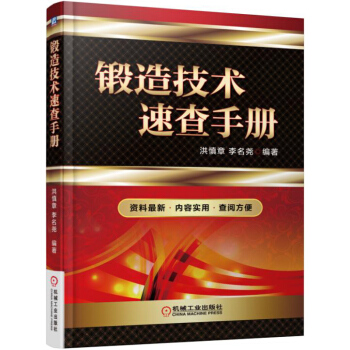

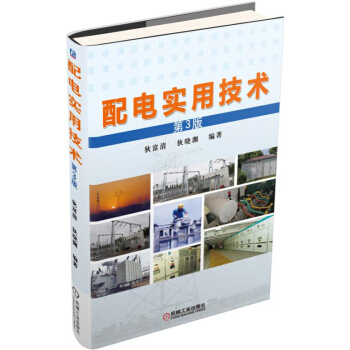

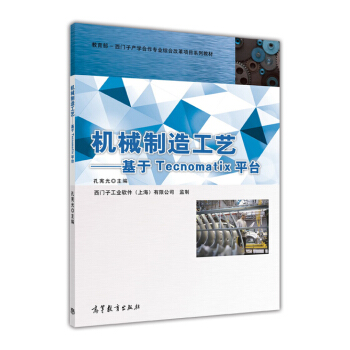


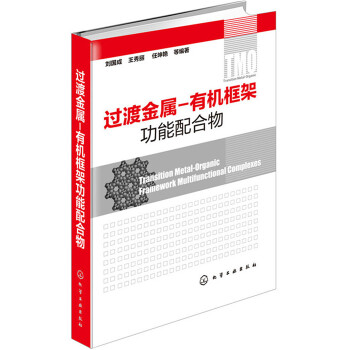
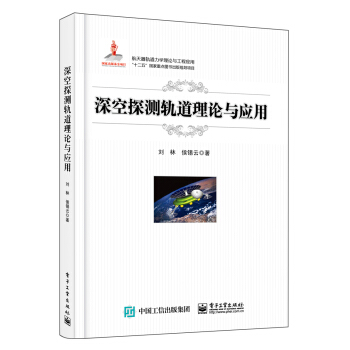
![面向2030中国机械工程技术路线图丛书:物流工程技术路线图 [Technology Roadmap of Logistics Engineering] pdf epub mobi 电子书 下载](https://pic.windowsfront.com/11801263/56404972Nd9278611.jpg)

